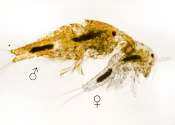The worm has turned: DIY lab platform evaluates new molecules in minutes
Plants are powerhouses of molecular manufacturing. Over the eons, they have evolved to produce a plethora of small molecules—some are beneficial and valuable to humans, while others can be deadly. For years, a good way ...









